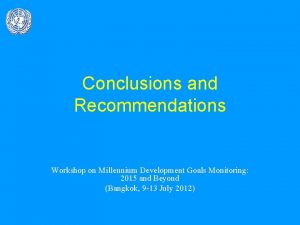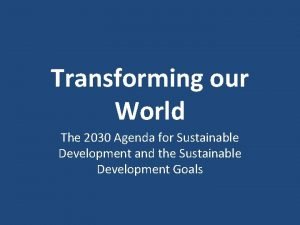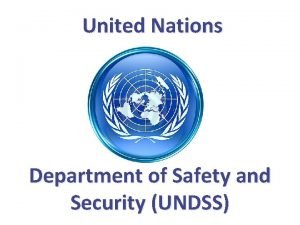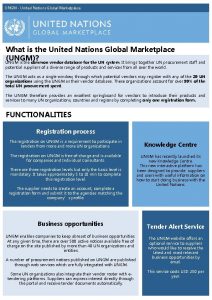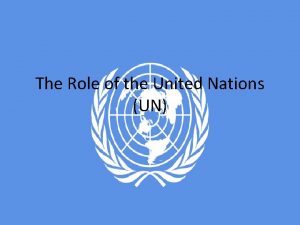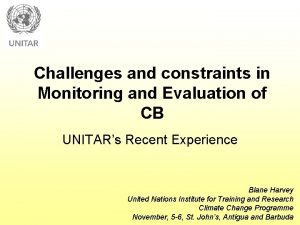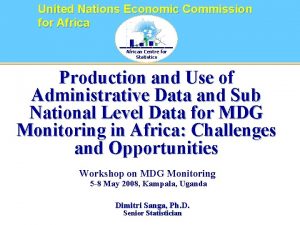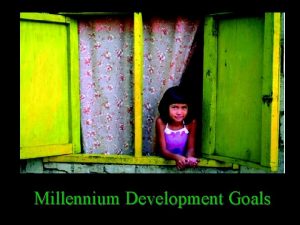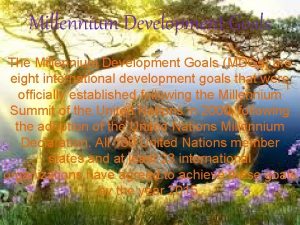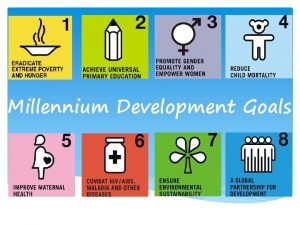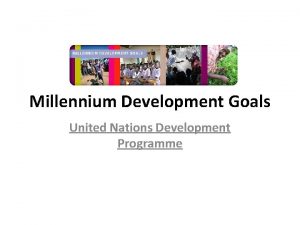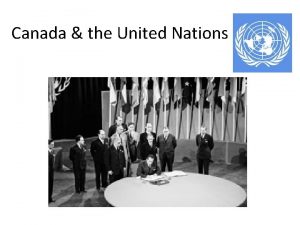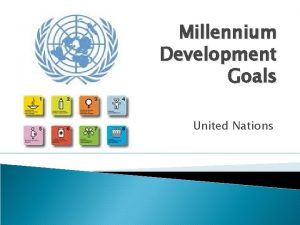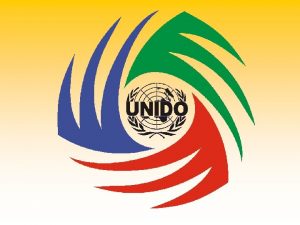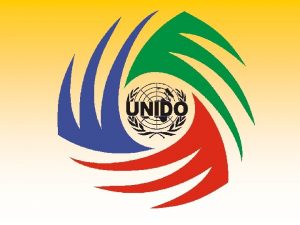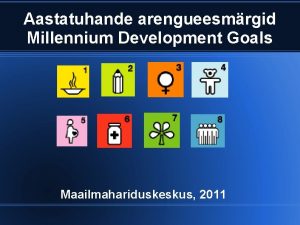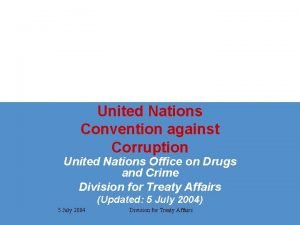Millennium Development Goals At the United Nations Millennium















- Slides: 15

Millennium Development Goals

At the United Nations Millennium Summit in 2000, world leaders met to develop a plan to improve the quality of life in developing countries.

All countries signed the Millennium Declaration, the first internationally agreed upon framework for fighting global poverty, hunger, disease, and inequality.

By signing the Declaration, all countries “recognize that, in addition to our separate responsibilities to our individual societies, we have a collective responsibility to uphold the principles of human dignity, equality, and equity at the global level. ”

By signing the Declaration, all countries “As leaders we have a duty therefore to all of the world’s people, especially the most vulnerable and, in particular, the children of the world, to whom the future belongs. ”

To realise the aspirations of the Millennium Declaration, eight specific development goals were created. Now known as the Millennium Development Goals (MDGs), these goals address the root causes of poverty and inequality with a target achievement date of 2015.

The Millennium Development Goals

Goal 1 Eradicate extreme poverty and hunger Reduce by half the proportion of people living on less than a dollar a day. Reduce by half the proportion of people who suffer from hunger.

Goal 2 Achieve universal primary education Ensure that all boys and girls complete a full course of primary schooling.

Goal 3 Promote gender equality and empower women Eliminate gender disparity in primary and secondary education preferably by 2005, and at all levels by 2015.

Goal 4 Reduce child mortality Reduce by two-thirds the mortality rate among children under five.

Goal 5 Improve maternal health Reduce by three-quarters the maternal mortality ratio.

Goal 6 Combat HIV/AIDS, malaria, and other diseases Halt and begin to reverse the spread of HIV/AIDS. Halt and begin to reverse the incidence of malaria and other major diseases.

Goal 7 Ensure environmental sustainability Integrate the principles of sustainable development into country policies and programs; reverse loss of environmental resources. Reduce by half the proportion of people without sustainable access to safe drinking water and basic sanitation.

Goal 8 Develop a global partnership for development Further develop an open trading and financial system that is rule-based, predictable, and non-discriminatory. This includes a commitment to good governance, development and poverty reduction—nationally and internationally.
 Draw a conclusion about the millennium development goals.
Draw a conclusion about the millennium development goals. Strategic goals tactical goals operational goals
Strategic goals tactical goals operational goals Strategic goals tactical goals operational goals
Strategic goals tactical goals operational goals Millennium goals 2000
Millennium goals 2000 Millennium goals 2000
Millennium goals 2000 Millennium goals 2000
Millennium goals 2000 United nations
United nations Undss
Undss Unmg
Unmg Six main organs of the united nations
Six main organs of the united nations What is the role of the united nations?
What is the role of the united nations? Ethics and integrity at the united nations
Ethics and integrity at the united nations Introduction to model united nations
Introduction to model united nations Constraints in monitoring and evaluation
Constraints in monitoring and evaluation United nations zambia
United nations zambia United nations
United nations
